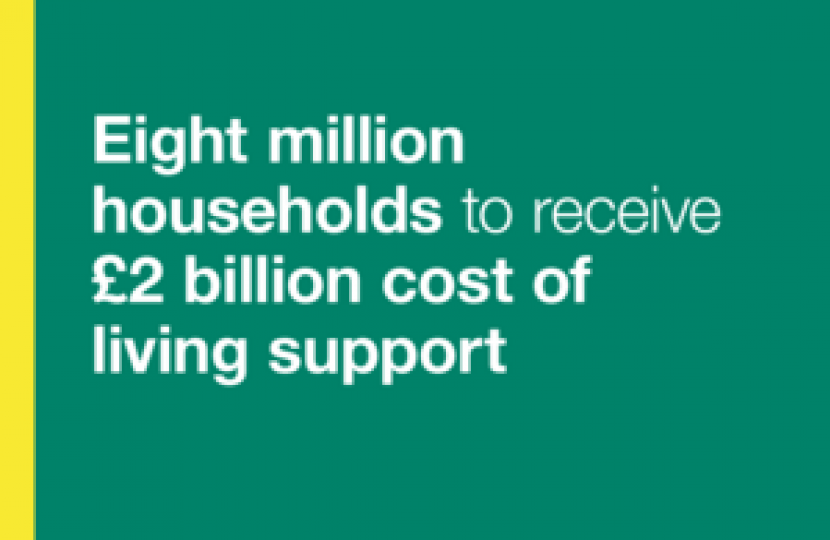
Low-income households will start to receive the third Cost of Living Payment worth £299.
- Payments are part of the £104 billion Cost of Living support which includes uprating benefits by 6.7% and pensions by 8.5%
- Comes as more people are set to secure long-term financial security through work thanks to the next generation of welfare reforms
Millions of households across the UK will start to receive a £299 Cost of Living Payment until 22 February as part of the Government’s £104 billion Cost of Living support package.
The payment will be sent out automatically and recipients do not need to apply to receive it. This includes tax credits-only customers who will receive the payment from HMRC between 16 and 22 February.
It is the third of up to three payments totalling up to £900 paid to eligible households on means-tested benefits over 2023/24 and comes as part of a support package that has helped millions of households since autumn 2021.
Our economy has turned a corner, and we are moving away from the big government, high spending, high borrowing, and high tax approach that was necessary before, and focusing on the long-term decisions required to strengthen our economy and give people the opportunity to build a wealthier, more secure life for themselves and their family.
This includes sticking to the plan to keep inflation down – which has already more than halved - and cutting taxes for hard working people to help them keep more of what they earn and drive down the Cost of Living.
Supporting people into well paid jobs is the best way to help people out of poverty and to give people long term financial independence. That’s why we’re introducing the next generation of welfare reforms, including unprecedented employment and health support to give people long term financial security.
The £2.5 billion Back to Work Plan will break down barriers to work and offer intensive support to those unemployed earlier, while the Chance to Work Guarantee will mean millions of disabled people can try work free from the fear that they could lose their benefits. As well as this, real wages grew 1.3% in the year up to November 2023.
This forms part of wider plans to get Britain working, by tackling inactivity and unemployment, while continuing to support those most in need.
Chancellor of the Exchequer Jeremy Hunt said:
Our decisive action helped to more than halve inflation last year while building the foundations for long-term growth through sensible tax cuts, which will help people’s money go further.
But the legacy of Covid and the ongoing Ukraine war has meant the last few years have been tough for many, which is why we’ve provided one of the largest support schemes in Europe worth £3,700 for the average household.
The Cost of Living Payments – worth £900 in total – come on top of a significant package of support which has been delivered since autumn 2021. Including:
- Cutting taxes for over 27 million working people this year through a 2% cut to Class 1 National Insurance Contributions, worth over £450 per year for the average worker.
- Cutting taxes for self employed people by cutting Class 4 contributions, benefitting 2 million people, and abolishing Class 2 contributions, a tax cut worth an average of £350 per year.
- Paying three million households the £150 Warm Home Discount this winter and 8.9 million pensioner households up to £600 in Winter Fuel Payments in December last year.
- Providing Cold Weather Payments to vulnerable households to help them with their energy bills during winter. The scheme – which runs from 1 November 2023 to 31 March 2024 – provides low-income households with an automatic payment of £25 following periods of cold weather.
- Providing the £650 Cost of Living Payments in 2022 and an additional cash boost on top of this payment including £300 to pensioner households; £150 to disabled individuals in 2022 and last year.
- Capping single bus fares at £2 outside of London until the end of next year to help millions of people make significant savings on their travel costs. The fare cap has helped cut bus fares in England by 7.4% between June 2022 and June 2023
- Paying around half of the typical household energy bill between October 2022 and July 2023 through our Energy Price Guarantee and £400 support scheme.
- Extending the 5p fuel duty cut and cancelling the planned increase – saving the average driver £200 over two years.
- Covering 85% of childcare costs for working households on Universal Credit, up from 70% under the legacy system – currently worth over £19,500-a-year for families with two children.
- Expanding Free School Meals to 5–7-year-olds – benefitting 1.3 million children and boosting the value of Healthy Start vouchers by over a third – from £3.10 to £4.25.
- Increasing the Universal Credit work allowance and cutting the taper rate, which was worth an extra £1000 a year to families on universal credit.
We will continue to support vulnerable people with the Cost of Living from April this year by:
- Uprating benefits in line with inflation by 6.7%.
- Maintaining the triple lock and increasing the state pension by 8.5% - after the largest ever cash increase last year for around 12 million pensioners.
- Investing £1.2 billion to restore Local Housing Allowance rates to the 30th percentile of local market rates, meaning 1.6 million private renters will see nearly £800 in additional help.
- Increasing the National Living Wage by its largest ever cash amount in April– worth over £1,800 to the gross annual earnings of a full-time worker – and lowered the age threshold for eligibility by 2 years.
The changes coming into force in April are part of the Government’s £104 billion Cost of Living package worth an average £3,700 per household, including the £900 in direct Cost of Living Payments for those on means-tested benefits.
We encourage people in need of additional support over winter to check their eligibility through our Help for Households website for the various Cost of Living schemes that are place.

